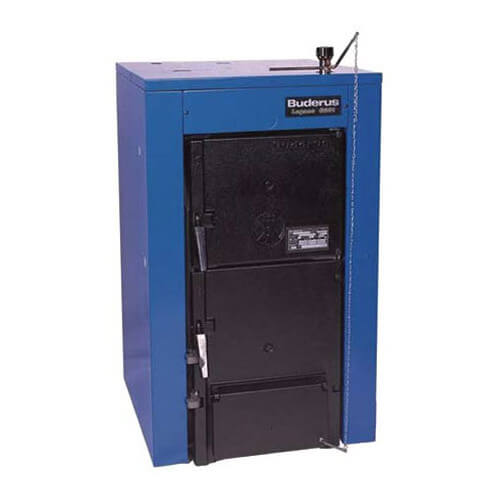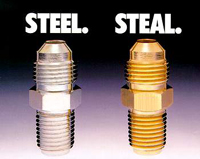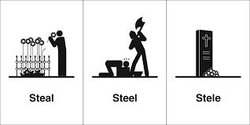I've used a Woodstock Fireview 205 for the last two seasons.
Cool, any others in the past?
I've used a Woodstock Fireview 205 for the last two seasons.

Cool, any others in the past?

I bet when you get up in the morning there will be more wood in the stove than was in it before you went to bed.

I am so glad that BK started publishing the high output, but then also publishes a more reasonable constant BTU ratings over an extended time.
Not too many numbers needed when you see a Keystone next to an Equinox! A tiny stove simply will not out perform a huge stove! It's exhaust might be a little cleaner, but that does not make up for all the extra mass.
Thats true with old smoke dragon stoves compared to new EPA stoves. A 2 cubic foot EPA stove can likely keep up with a house that needed a 3.5 cubic foot non-EPA stove. But this would not be the case with new stoves that have similar combustion systems. The 3.5' stove would blow the doors off of the 2' stove. It's the truth.That seems to be a constant rant on this site. I disagree with it big time. Size does NOT mean as much as you guys think. Design has a lot more to do with it. All the fuel/heat on that big unit can very easily go right up the chimney instead of heat the room. I'm not saying that is the case in this particular comparison, I don't know the stoves. But I do dislike that constant rave of size is the big difference, it's not.
That seems to be a constant rant on this site. I disagree with it big time. Size does NOT mean as much as you guys think. Design has a lot more to do with it. All the fuel/heat on that big unit can very easily go right up the chimney instead of heat the room.
...But I do dislike that constant rave of size is the big difference, it's not.
The 3.5' stove would blow the doors off of the 2' stove. It's the truth.
But how do we compare the 3.5 non CAT or CAT EPA stoves to these new 2.8 and 3.2 hybrid EPA stoves?

Is this a threat of yet another Union plug?
If the stove relies on electronics to operate, I'm not interested.
Woodstock Soapstone Co. August 28, 2013 at 4:58 PM
All of the controls on this stove are manual – nothing electronic, and no power required. At one point we thought that we would need at least a small amount of power to achieve the emissions/efficiency profile we were after, but we’re there without adding any power.
Having said that, we are working on a “proof of concept” module that does need power. It doesn’t control the stove, but it gives real-time information on the performance of the stove (burn rate, BTU output, efficiency, emissions, time remaining to reload, effects of moisture content, etc.) We think/hope it will be ready to exhibit in November, but again it does not control the stove (though we would hope it might help to control the operator!). The device needs some power for the O2 sensor heater, an amplifier for strain gages, and a small pump.
The “proof of concept” module is a combination of known technologies (thermocouples, O2/CO sensors and strain gages) with some software and a GUI (graphic user interphase). I think our big contribution is getting a platform in the base of the stove that impinges on strain gages below the stove so that you can monitor the weight of the fuel load. When you put wood in the stove, you would know its weight, and you would be able to plot its consumption in pounds, BTU output, efficiency, and emissions both for an individual run and over time (weeks, months, or heating season).
Tom Morrissey
Woodstock Soapstone
 .. I'm thinking Woodstock will shine with this stove, especially how it's priced and with top and rear chimney pipe options.. Plus don't forget,,, a nice built in cook top... Very smart! I will say when I saw that stove in person,, she's a big girl!
.. I'm thinking Woodstock will shine with this stove, especially how it's priced and with top and rear chimney pipe options.. Plus don't forget,,, a nice built in cook top... Very smart! I will say when I saw that stove in person,, she's a big girl!I bet when you get up in the morning there will be more wood in the stove than was in it before you went to bed.
The Rabbit HybridA fast breeder stove.

No-I get into trouble when I post about this stuff so that is all I am going to say, no need to get the thread closed.Thats true with old smoke dragon stoves compared to new EPA stoves. A 2 cubic foot EPA stove can likely keep up with a house that needed a 3.5 cubic foot non-EPA stove. But this would not be the case with new stoves that have similar combustion systems. The 3.5' stove would blow the doors off of the 2' stove. It's the truth.
Wasn't serious about thatI know one given they arent going to call it The Rabbit Hybrid


















Could a smoke dragon of the 1970s with a 3.0cu ft firebox put out the same BTUs using the same amount of wood as a 3.0cu ft firebox EPA stove?
Does an early EPA stove with the same size firebox as today's EPA stoves put out the same BTUs using the same amount of wood?
Does a new hybrid stove with a smaller firebox but wringing out most of the conceptually available BTUs have a chance of putting out more BTUs than a less efficient EPA stove with a larger firebox using the same amount of wood?
I don't have any idea on the latter questions but independent objective testing results would certainly be an improvement in attempting to find the answers. Even if the EPA tests are far from perfect, at least its a starting point, and stove manufacturers could list the EPA stats and their own stats and if necessary explain why their own stats are more realistic.
I just wanna know when the EPA started dictating btu output or even thermal efficiency testing. Requires a calorific room and ain't cheap. The number ranges in the EPA stove list on their site is for "comparable" stoves and is over twenty years old.
The only thing the EPA gives a tinker's damn about is what particulates come out of the stack.

